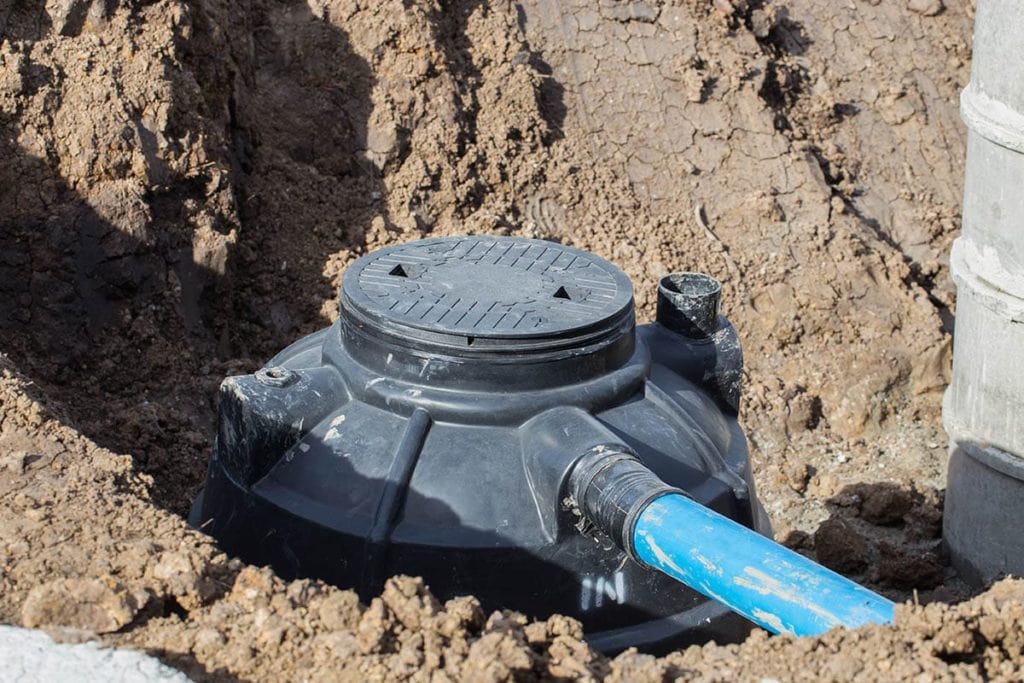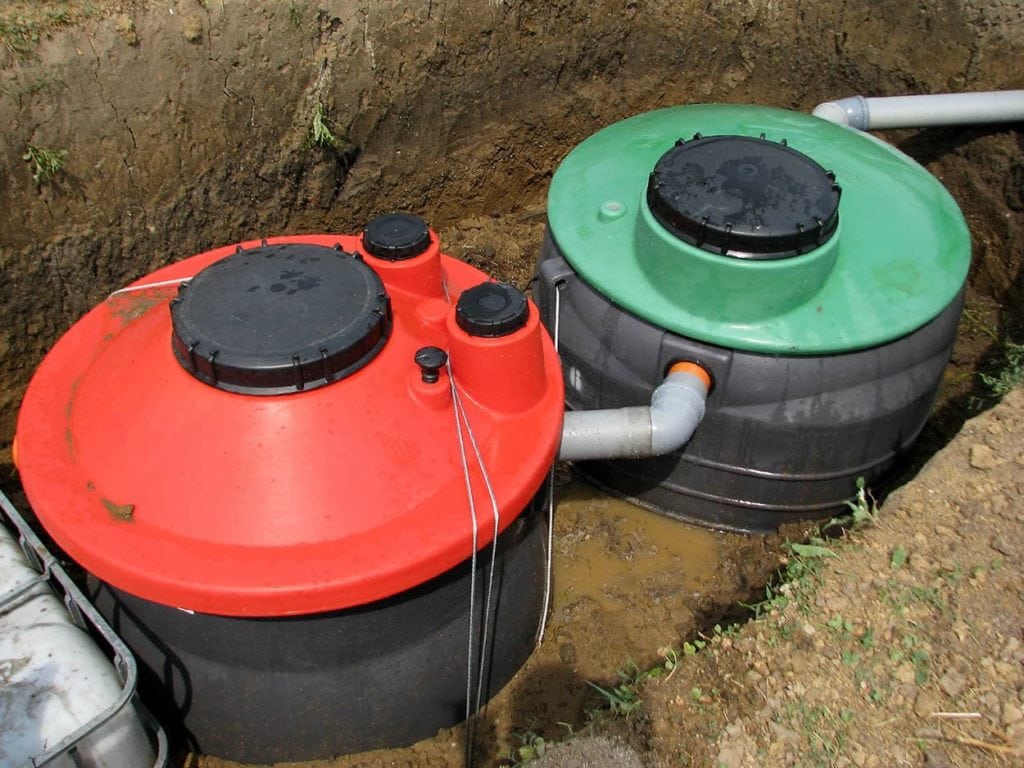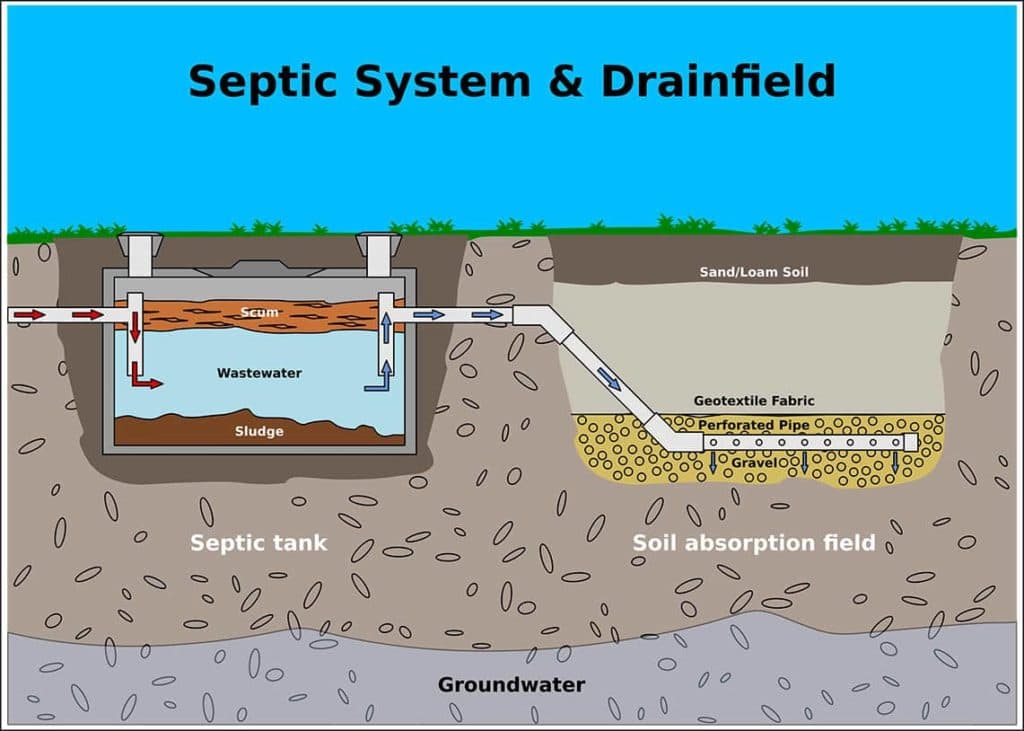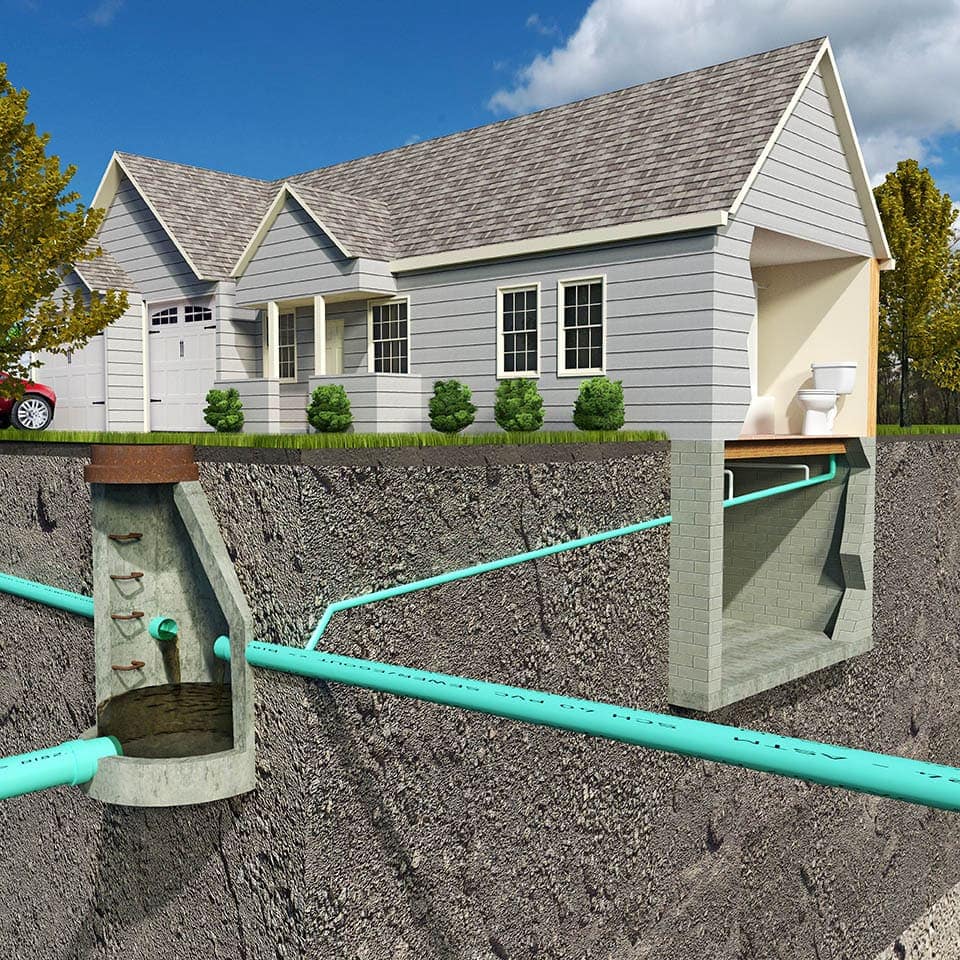Septic Tank Installation & Replacement Costs 2024 (Price Guide)
-
- Last updated:


A septic system is most often used in a property that is not attached to the municipal sewer system. It is a watertight container, usually made from concrete, and is buried. Wastewater passes into the tank and separates so that solids form a sludge at the bottom of the tank while oil and grease float to the surface.
Most tanks hold at least 1,000 gallons of water, although the actual size you require will depend on the size of your property and the amount of wastewater produced. Replacing an existing tank is cheaper than fitting a brand-new system, with the latter necessitating the excavation and removal of earth and potentially hardcore. You may also need to pay for permits.
With so many variables, it is difficult to predict the final cost of septic tank installation, but you should budget from $5,000, for a tank replacement, to $20,000 or more, for a high-quality 1,500-gallon tank and complex installation requirements. To get a more accurate idea of price, you have to determine the tank size, desired material, placement of the tank, and any additional excavation costs, and you can use the following guide to help.
Purchase Cost
There are many costs associated with septic tank installation. Often, the tank itself only makes up a portion of the purchase cost, unless you are experienced in the installation and maintenance of this type of product yourself. First, you have to decide on the type of tank you want:
- An aerobic system needs oxygen, and it usually uses a pump system to oxygenate and aerate the wastewater in the tank. This encourages the waste to break down. An aerobic system is complicated and will require at least two tanks. The typical cost of buying this type of system is $10,000 to $20,000 and you should expect installation and maintenance costs to be higher, too.
- Anaerobic systems use bacteria that dislike oxygen. These bacteria break down the waste as it reaches the tank. This type of system is more convenient, easier to maintain, and it normally has a lower purchase price and maintenance costs associated with it. Expect to pay between $2,000 and $6,000 for one of these tanks.

Tank Size
As well as the type of tank, you will need to choose one that is an appropriate size. All wastewater from your property will pass into the tank where it is broken down before being spread in the drain field. Concrete is the most commonly used material in septic tank construction, and the price for a tank of this type would be:
- For a 3- or 4-bedroom property, you will need a 1,250-gallon tank, which will cost approximately $2,500.
- A 1,500-gallon concrete tank, suitable for a 5- or 6-bedroom home, will cost $2,700.
As you can see, there isn’t a lot of difference in the price between these two sizes, but the larger tank will cost a lot more for groundworks and permits.
Building a Drain Field
The drain field is an integral part of the septic system. Also referred to as leach fields or leach drains, a drain field is a network of pipework where the separated waste is passed. The effluent trickles out of the pipes, through aggregate that is used to prevent flooding, and into the soil below. Here, the soil disposes of bacteria before the cleaned water is passed back into the water table. Expect to pay anywhere between $2,000 and $8,000 to have an effective drain field built as part of your system.

Ground Preparation
While the drain field can be expensive, it is an important part of the system. Another important element is ground preparation. You will need to clear the land, dig up the earth, and move or remove it. This costs an average of about $1,000 for a standard property and an average septic system.
Permits and Red Tape
Various tests will need to be undertaken before you can even consider having a septic tank installed. A deep hole percolation test, costing $1,500, determines the type of soil you have. A positive test means that you can have a standard leach field. A negative test means that you will have to have an above-ground or mound septic system, which will cost two or three times as much as a normal septic system.
Once the tank and system are fully installed, you will have to have them inspected. Permits cost approximately $300, with costs being determined by the area you live.
It’s also worth taking into account additional costs that might be incurred once the job is done. Expect to budget between $50 and $200 a year for maintenance, with pumping required every three to five years.
Finally, you may have to pay for landscaping and other work to make the area look good once the tank is installed and operational.

Installation Costs
The final costs for having a septic tank installed are the actual installation or labor costs. Hiring a professional will increase your costs, but it not only means that the installer has a good idea of what they are doing and will know how to combat any problems, but you will have a person or contract to fall back on if things go wrong, giving you greater peace of mind.
You should get a quote for the work, but expect labor costs to come in between $500 and $5,000 for this kind of project.
Septic Tank Installation Costs
A septic tank is a necessary addition to many homes and properties. It is used to remove, clean, and dissipate wastewater and effluent safely back to the water table. The final cost will vary according to the type of system, size of the tank, any difficulties encountered while installing the tank, and whether you pass the percolation test for an underground leach field.
Expect to pay anywhere from $6,000 to $20,000 or more, with the higher price tags reserved for difficult jobs on properties that are difficult to access. You should also budget around $200 a year for maintenance costs, including draining and flushing the tank and having the concrete checked for cracks and other potential damage.
See also:
- Cesspool vs Septic Tank: Which One Should You Choose!
- 10 Decorative Septic Tank Cover Ideas (With Pictures)
Featured Image Credit: Phattara Away, Shutterstock
Contents

